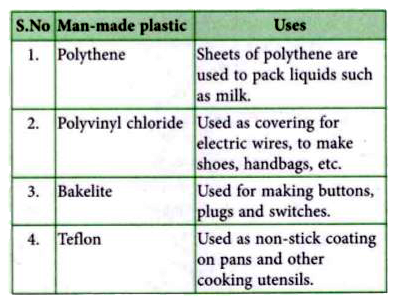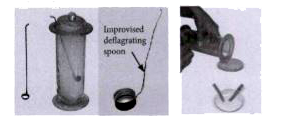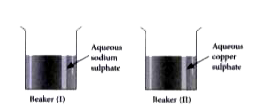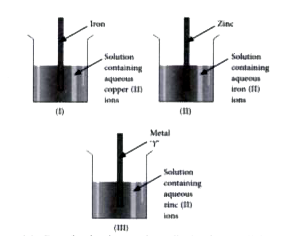SECTION - A from MTG IIT JEE FOUNDATION Chapter 011:FOOTSTEPS towards(CBSE Board) for Class 8
| Class 8 | CHEMISTRY |
| Chapter | FOOTSTEPS towards(CBSE Board) |
| MTG IIT JEE FOUNDATION | SECTION - A |
| Medium | English |
| Academic Year | 2023-2024 |
Question 28
Most of the metals react chemically with other substances in one form or another. Few metals which do not react with common chemicals are called noble metals e.g., silver, gold, platinum. The rate of reaction with which metals react is not same for all the metals. The rate of reaction depends on the reactivity of metals. On the basis of their reactive nature, a series known as reactivity series has been drawn in which metals are arranged in decreasing order of their reactivity.

Which of the following represents the correct reactivity order of metals with water?View SolutionQuestion 29
Most of the metals react chemically with other substances in one form or another. Few metals which do not react with common chemicals are called noble metals e.g., silver, gold, platinum. The rate of reaction with which metals react is not same for all the metals. The rate of reaction depends on the reactivity of metals. On the basis of their reactive nature, a series known as reactivity series has been drawn in which metals are arranged in decreasing order of their reactivity.

A strip of magnesium ribbon is added to some solutions of metal nitrates. Which metal nitrate will have no reaction with magnesium?View SolutionQuestion 30
Most of the metals react chemically with other substances in one form or another. Few metals which do not react with common chemicals are called noble metals e.g., silver, gold, platinum. The rate of reaction with which metals react is not same for all the metals. The rate of reaction depends on the reactivity of metals. On the basis of their reactive nature, a series known as reactivity series has been drawn in which metals are arranged in decreasing order of their reactivity.

Pieces of copper, lead, aluminium and zinc are added to dilute hydrochloric acid. Which of the following test tubes most likely contains zinc?
 View Solution
View SolutionQuestion 31
Most of the metals react chemically with other substances in one form or another. Few metals which do not react with common chemicals are called noble metals e.g., silver, gold, platinum. The rate of reaction with which metals react is not same for all the metals. The rate of reaction depends on the reactivity of metals. On the basis of their reactive nature, a series known as reactivity series has been drawn in which metals are arranged in decreasing order of their reactivity.

Which metal would not produce bubbles of hydrogen gas when added to dilute hydrochloric acid?View SolutionQuestion 32
Most of the metals react chemically with other substances in one form or another. Few metals which do not react with common chemicals are called noble metals e.g., silver, gold, platinum. The rate of reaction with which metals react is not same for all the metals. The rate of reaction depends on the reactivity of metals. On the basis of their reactive nature, a series known as reactivity series has been drawn in which metals are arranged in decreasing order of their reactivity.

Observe the table given below:

= reaction takes place
= reaction does not take place
Identify the correct order of reactivity of the given metals.View SolutionQuestion 41
The given figure represents destructive distillation of coal. Destructive distillation is the strong heating of a substance in the absence of air.

Coal is a fossil fuel and it cannot be prepared in a laboratory or industry because the formation of coal
(I) is a very slow process
(II) needs very low pressure and low temperature
(III) needs very high pressure and high temperature
(IV) causes air pollutionView SolutionQuestion 42
The given figure represents destructive distillation of coal. Destructive distillation is the strong heating of a substance in the absence of air.

Pis processed in industries to get some useful products such as 'Q', 'R' and 'S. 'S' is obtained during the processing of P' to get 'Q, 'R' is a mixture of about 200 substances. Identify 'P', 'R' and 'S.View SolutionQuestion 43
A flame is the visible gaseous part of a fire. It is a zone of combustion of gaseous substances accompanied by evolution of heat and light. All substances do not burn with a flame. Only those substances that vaporise during burning produce flame. A candle flame is taken to study the various zones of a flame.

(A), (B) and (C) are respectively.View SolutionQuestion 44
A flame is the visible gaseous part of a fire. It is a zone of combustion of gaseous substances accompanied by evolution of heat and light. All substances do not burn with a flame. Only those substances that vaporise during burning produce flame. A candle flame is taken to study the various zones of a flame.

Arrange X, Y and Z in increasing order of temperature.View SolutionQuestion 45
A flame is the visible gaseous part of a fire. It is a zone of combustion of gaseous substances accompanied by evolution of heat and light. All substances do not burn with a flame. Only those substances that vaporise during burning produce flame. A candle flame is taken to study the various zones of a flame.

Which zone of a candle flame is the zone of no combustion?View SolutionQuestion 46
A flame is the visible gaseous part of a fire. It is a zone of combustion of gaseous substances accompanied by evolution of heat and light. All substances do not burn with a flame. Only those substances that vaporise during burning produce flame. A candle flame is taken to study the various zones of a flame.

The luminous and non-luminous zones of flame is respectively.View SolutionQuestion 47
A flame is the visible gaseous part of a fire. It is a zone of combustion of gaseous substances accompanied by evolution of heat and light. All substances do not burn with a flame. Only those substances that vaporise during burning produce flame. A candle flame is taken to study the various zones of a flame.

Different zones of a candle flame are marked by the letters (A), (B) and (C).
Which of the following statements are correct?
(I) (B) is the hottest part of the flame.
(II) (C) is moderately hot.
(III) (A) is the hottest part of the flame.
(IV) (A) is moderately hot whereas (C) is the coldest part.
(V) (C) is the luminous zone.
(VI) (B) is the luminous zone.
(VII) (A) is the dark zone.View Solution











 What would you observe when magnesium powder is added to beaker (I)? Explain your answer.
What would you observe when magnesium powder is added to beaker (I)? Explain your answer.






